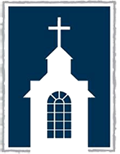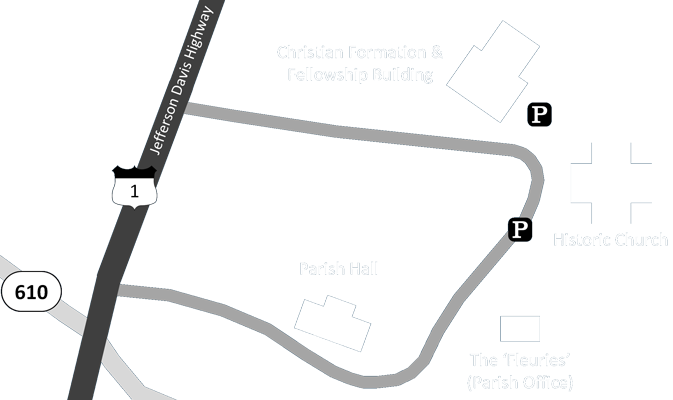Aquia Church in the 20th Century
Restorations
After the Civil War, many members of the church became interested in protecting the church for generations to come. In 1914, Clifton Chapel began major renovations. A new alter was constructed out of discarded 1757 wood from Aquia Church and reredos were made from a mantel taken from Claremont, the home of the Rev. John Moncure which was built in 1735.[1] Aquia Church also would need to be restored again by the 20th century. Moncure Robinson, who had personally funded the restoration project postwar, established at his death in 1874 the Moncure Robinson Fund, which still exists today, a fund greatly helped the restoration efforts of the church in the 1930's.[2] Robinson was the Chief Engineer or financially involved with most of the railroads on the east coast and "invented the method for construction of railroad beds through tunnels."[3] In 1935, members of Aquia Church erected a memorial tablet in the church to honor Robinson. In 1929, Annie Fleming Smith, along with other groups and the financial assistance of the Moncure Robinson Fund, helped spearhead the restoration of Aquia Church, which was difficult to access at certain times of the year.[4] Annie was the daughter of historian Vivian Minor Fleming and Emily White Lewis with whom, she helped save Kenmore and founded the Historic Fredericksburg Foundation, Inc.
Dr. Kate Waller Barrett
Rev. Robert South Barrett was the rector of Aquia Church from 1876-1877.[5] His wife, Dr. Kate Waller Barrett, would later in life become a force in the women's movement and a famous philanthropist and preservationist. While she is most famous for co-founding the National Florence Crittenton Mission, she also served important roles in preserving the Arlington National Cemetery and Custis-Lee Mansion, and championed the creation of a Shenandoah National Park.[6] She was also politically active, serving as the President of the National Council of Women, Vice President of the Virginia Equal Suffrage, President of the American Legion Auxiliary and in 1919 was appointed by President Woodrow Wilson as an observer to the Versailles Peace Congress.[7] When she died in 1925, the governor of Virginia ordered the flag on the State Capitol to be lowered to half-staff, the first time a woman had ever been so honored.[8] Kate Waller Barrett Elementary School in Stafford was named after her. She was buried in Aquia Church's cemetery, along with her husband. Dr. Barrett and her husband the Rev. Barrett have a memorial tablet inside of the church.[9]
Changes and Growth at Aquia Church
In 1929, the Rev. Henry Heaton began his tenure at Aquia Church, marking for the first time since the Revolutionary War that Aquia had a priest in charge who didn't share those duties with another church.[10] During his tenure he presided over the 1930's renovation of the church as well as the expansion of the cemetery in 1942, when many historic family cemeteries were reinterred when over 50,000 acres were purchased by the federal government to expand Quantico Base.[11] A bicentennial ceremony was held in September of 1951 with the guest speaker Dr. Douglas Southall Freeman, a Pulitzer Prize author and editor of the Richmond News Leader.[12] In the 1961, the Parish Hall was built expanding the facilities at Aquia Church.[13] In the 1987, "The Fleurries," a small 18th-century house, was moved from its original location south of the church to what is now Aquia Towne Center.[14] The home belonged to Anne E. Moncure, the superintendent of elementary education in Stafford from 1934 until her retirement in 1960.[15] Each year the ECW awards the Anne E. Moncure Scholarship to seniors in her honor.
Aquia Church in the 21st Century
Finished in 2016, the Christian Formation and Fellowship Building brings more space for our Christian Education and and Music programs along with a larger Parish Hall. In 2017, the church marked 350th anniversary of the founding of the Aquia Church parish.



